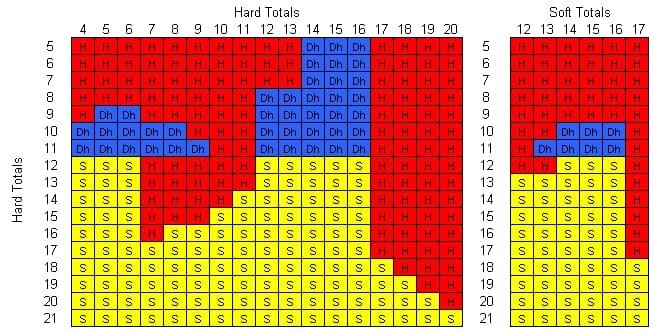Learn More About Double Exposure Blackjack

Blackjack is one of the most popular card games played at online casinos and in bricks-and-mortar venues. Its simplicity and extremely low house edge is what draws players to it in droves. There are several blackjack variations on the market; they are more prevalent online. Double Exposure Blackjack is one of the newer formats, one that has increasing popularity.
Double Exposure Blackjack is known as Zweikartenspeil in Germany, which translates to “Two card game.” The game’s name gives you an indication of the rule variations in play. Both the player’s and the dealer’s cards are face-up throughout. This rule change hands a significant advantage to the player. However, casinos alter other rules which swing the odds back in their favour.
Common Double Exposure Blackjack Rules
Several Double Exposure Blackjack rules exist, but there are some staple rules. First, both dealer cards remain exposed throughout the hand. The dealer wins on all ties except in the case of a natural blackjack. In addition, players only receive even money when they hit blackjack, and the rules permit only one split.
Most rule variations increase the house edge, but some favour the player. For example, the dealer standing on soft 17 increases the odds 0.39% for the player. Allowing a double following a split worked 0.32% in the player’s favour.
Limiting players splitting and doubling ability works in the house’s favour. Allowing doubles only on 10-11 increases the house edge by 1.44%. This is the most damaging Double Exposure Blackjack rule.
House edge remains around 0.66% for Double Exposure Blackjack, which is still very low. Indeed, it is one of the games with the lowest house egde.
Basic Strategy
Anyone who knows basic blackjack strategy already knows most of the Double Exposure Blackjack strategy. Why? Because they are extremely similar. Strategy is easier to follow because you know both dealer cards. Printing off a “cheat sheet” is highly recommended. Doing so makes it possible to follow the strategy exactly.
The graphics below show the optimal strategy when the dealer stands on soft 17.



A Typical Hand In Action
A Double Exposure Blackjack hand begins with each player receiving a face-up card, and the dealer too. The dealer gives a second face-up card to all players before placing their second card face-up.
Your options after the deal are simple. Hit to receive another card as you attempt to hit 21 or beat the dealer’s score. Stand means you are happy with your hand and do not want any additional cards. Sitting on 20 is the perfect example of when to stand because only one hand beats yours.
Double down means you place another bet twice the size of your initial bet. You only receive one more card after doubling down. Only make this bet, if allowed, when you have hard 9, 10, or 11. There are more tens in the deck than any other card. Doubling down on these numbers improve your chances of winning a larger pot if you beat the dealer’s score.
It is sometimes a good idea to split your cards. This is entirely dependent on the dealer’s cards. Ensure you follow the strategy in the graphics above to maximise your winning chances.
You win if your hand has a higher value than the dealer’s. You also win if you hit a natural blackjack (21 with two cards) but the evens is the payout, not 3-to-2 as in traditional blackjack games.
You lose when your total is more than 21 – this is called going bust – or the dealer’s hand total is greater than yours. Furthermore, you lose if your total matches the dealer’s except with natural blackjacks.
The hand is deemed a push if you and the dealer tie with blackjack, but not naturals.
